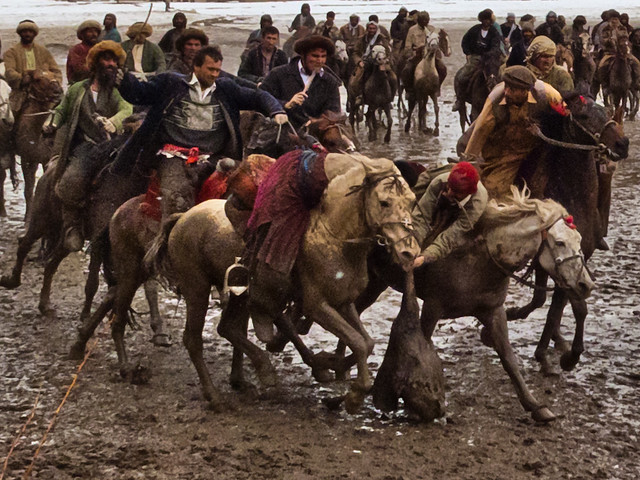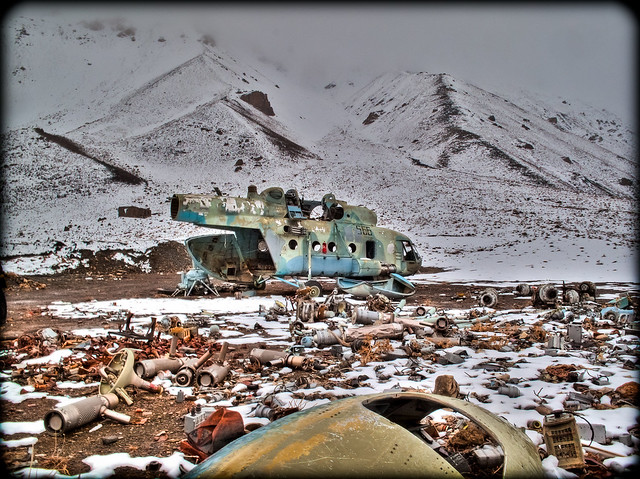Of Lions and Horses in the Panshir
Last Friday morning we headed off at first light from the muddy streets of Kabul. We wound our way north, past Bagram, where ISAF is headquartered, and took a sharp turn east in the village of Jebal Seraj. We’d decided to take a day long pilgrimage, of sorts, to the tomb of Ahmad Shah Masoud. His grave lies deep his homeland of the Panshir Valley which he so famously defended against the long and arduous Soviet attack.
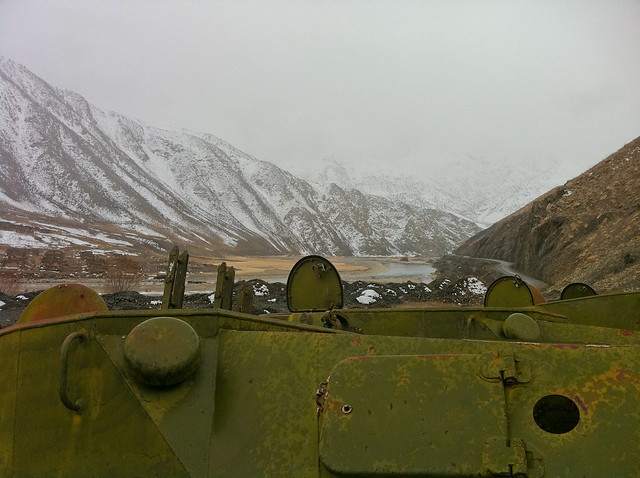
Masoud is arguably Afghanistan’s biggest hero. Throughout Afghanistan his picture is displayed in car windows, posted on buildings, or memorialized in woven blankets. The day he was assassinated, September 9, 2001, by suspected Al Qaeda agents posing as journalists, is a national holiday. He earned his title “The Lion of the Panshir” defending his home turf from the Soviets during the attacks of the 1980s. Lions are intrinsically part of Panshir culture. The word itself means “Five Lions†and we saw election posters for a candidate whose symbol was four of the majestic beasts. (Each candidate is “randomly assigned†a visual symbol so illiterate people can recognize their candidate on the ballot. It’s well known that with the right funds and connections it is possible to influence on this “random assignment.†One political party paid for all of its candidates in different races to have apples for icons, to present uniformity to its illiterate supporters.)
During the Soviet invasion of the 1980’s the Lion of the Panshir and his mujahideen fighters would descend from the valley, attack the Soviet supply chains heading across the Salang pass to Kabul, and retreat with their stolen booty. The Soviets tried to dislodge him from the valley in ten separate offensive attacks. All of them failed.
When the communists fell from power Masoud served in the mujahideen government as Minister of Defense for the few years before the Taliban took power. He then retreated back to his valley, from where he continued fighting the Taliban, (until the bomb hidden in the disguised journalists’ camera made him a martyr.) When he died he was the leader of the Northern Alliance, or the United Islamic Front-an unprecedented multi-ethnic group of leaders who fought against the Taliban government and, once the US began carpet bombing post September 11, took control of Afghanistan.

In 2002 Mosoud was post humously nominated for a Nobel Peace Prize. (However, the prize can only be awarded to a living person.) He was buried 30 km from the entrance to the valley, near the village that was his home. Originally it was a plain, simple grave on a large promenade overlooking the valley, but recently a massive marble structure has been erected over the grave, with plans already in construction to add a large mosque and building complex to the site.
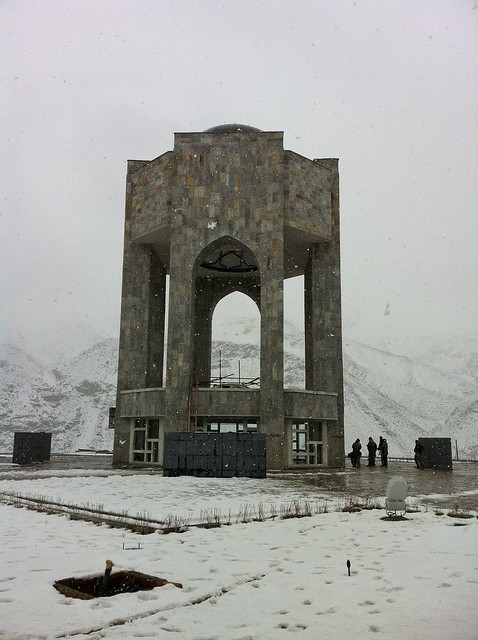
This was our initial destination as we made our way up the valley, driving alongside the Panshir river, stopping to climb around in the rusted shells of discarded tanks and helicopters, until we reached the hillside crested with the marble monolith. We paid our respects to the great hero, along side with a steady stream of others, local and visitors, who often stopped to pray at the holy grave site.
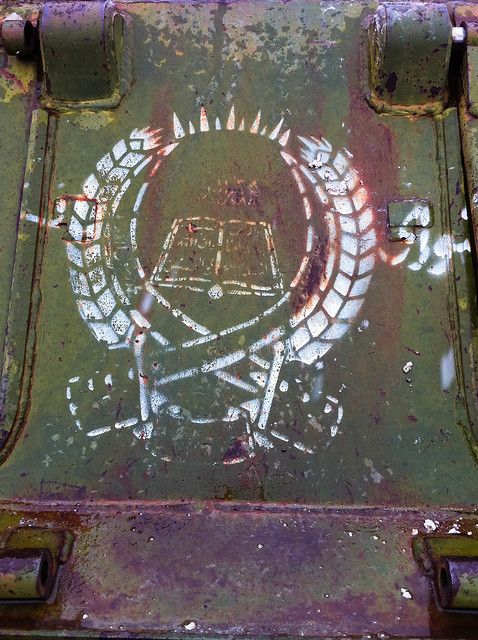
The path approaching the site was lined with a variety of Soviet armored vehicles, some spray painted with the Taliban’s symbol (were they captured as Panshiri loot during a battle 15 years ago?). A few bees had taken up residence behind the screen of one of the instrument panels, creating a cluster of perfectly geometrical cells, whose inhabitants and makers were now frozen to death by the chilly winter. Beyond the high promenade, fields spread out across the valley, sewn with snow.
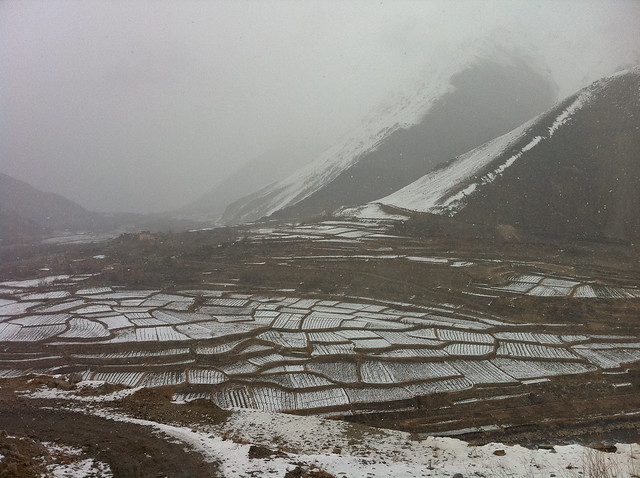
As we climbed around the rusty metal, the wind whipped falling snow at us priming us for some hot tea, so we went in search of a chaihana. As we drove up the valley we stopped to ask men wrapped in green Uzbek robes, huddled against the cold, where we might be able to get some chai and a bite to eat. “Fifteen minutes up the road†seemed to be the standard response. After a few incarnations of this, the road finally passed through a tiny town center, complete with a mosque, a few stores, and exactly one place to get food.
We stomped in and huddled near the fire they lit for us. After realizing all they had was beef broth and tea, so Najib took charge and sent the employees to the bazar for supplies and then ended up cooking up the meal himself. I’ve encountered few restaurants where you bring your own food and cook for yourself.
Grateful to be out of the car and out of the cold, we relaxed on the raised wooden platform covered in carpets. The other patron across the way started chatting with us. We learned from him that every Friday in winter the village played Buzkashi on a field just down the street. They were now on a break for prayer, but would resume the game in an hour. He invited us to come watch.
Buzkashi is the national sport of Afghanistan. It’s a winter sport, played on horses, somewhat like polo. Two teams compete to grab a dead goat and transport it across a field into one of two goal circles. Usually two villages compete against one another and there are cash prizes for the players who score goals.
The match we saw was played in a large field of mud and snow. A clump of players reared their mounts, smashing and pushing one another in attempts to reach down and scoop the 36 kilo dead goat off the ground. Many of the players wore Soviet tanker hats. When asked how they acquired their headgear they answered “We took them from the Russians we killed.” Four hats per tank, hundreds of tanks, you do the math. As they kicked and whipped and pushed, the horses’ and players’ legs alike were covered in muddy brown slush and the goat was indecipherable from a bag of mud.
And so we spent the afternoon huddled against the cold with the entire population of a small Panshir Village, watching horses and men fight each other to carry a dead goat across the valley.
Epilogue: On our journey home we stopped to watch some kids shoot snowballs across a field using a long slingshot apparatus. When they realized I was videotaping they quickly pushed their ace slingshotter forward, encouraging him to display his talent. They then taught Peretz how to shoot, applauding his efforts. His number two shot earned him much whasta.



